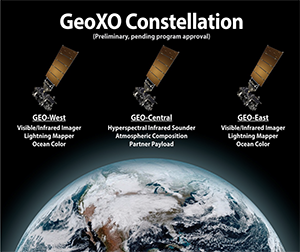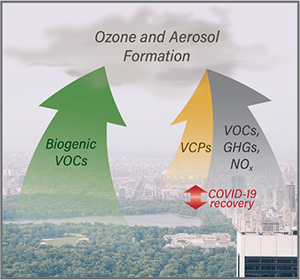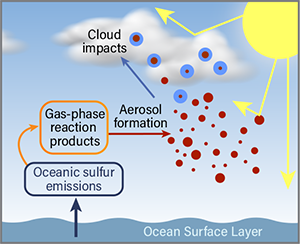
AEROMMA observations validate new technology for space-based observations of atmospheric composition
AEROMMA provides observations for evaluating the NASA Tropospheric Emissions: Monitoring of Pollution (TEMPO) and NOAA Joint Polar Satellite System (JPSS) trace gas and aerosol products, and informs the future NOAA Geostationary Extended Observations (GeoXO) constellation. AEROMMA observations evaluate NOAA’s next generation weather-chemistry models and chemical data assimilation of atmospheric composition satellite data.

GHGs = greenhouse gases
NOAA research identified volatile chemical products (VCPs) as a major source of man-made emissions in urban areas that contribute to ozone and PM2.5
Volatile chemical products (VCPs) include personal care products, cleaning agents, coatings and paints, adhesives, and insecticides. In some densely populated urban areas, VCPs are a larger source of volatile organic compounds (VOCs) than motor vehicle tailpipe exhaust.
VOCs (including VCPs) contribute to ground-level ozone and PM2.5, which are hazardous air pollutants that lead to 100,000+ premature deaths and $1T in damages annually in the U.S.

A recent NOAA discovery redefined the marine sulfur cycle, prompting a renewed look at oceanic sulfur impacts on climate
Ocean-emitted sulfur, primarily dimethyl sulfide (DMS), reacts in the air to produce sulfate aerosol particles. These aerosols are important for global climate because they can act to form marine clouds and/or brighten existing marine clouds that reflect incoming sunlight. Oceanic sulfur is also an important natural source of sulfate aerosols to the stratosphere. Stratospheric sulfate aerosols reflect sunlight and have a cooling effect on the planet.
CSL's discovery of an additional DMS oxidation product (HPMTF) shows that the marine sulfur cycle in current climate models is incomplete (Veres et al., PNAS, 2020).